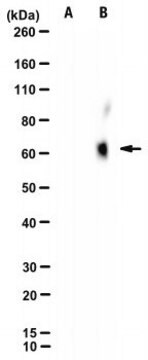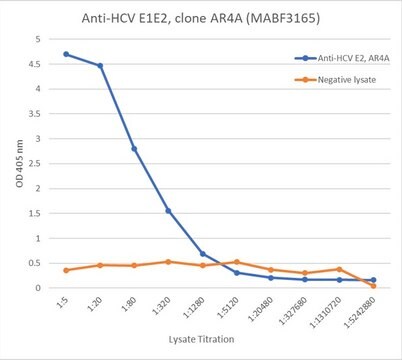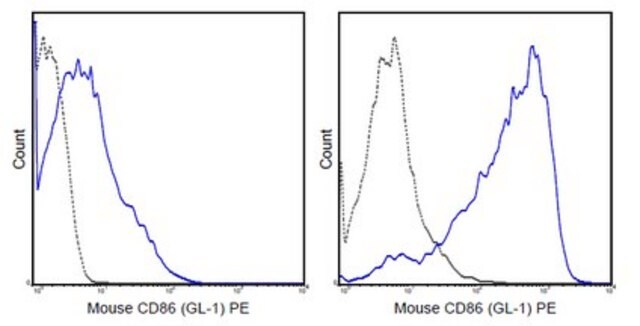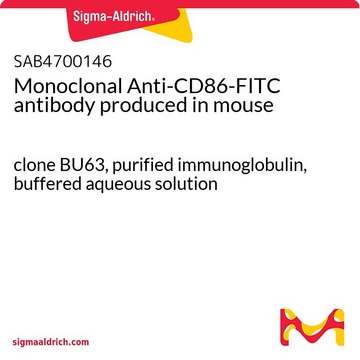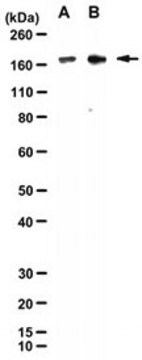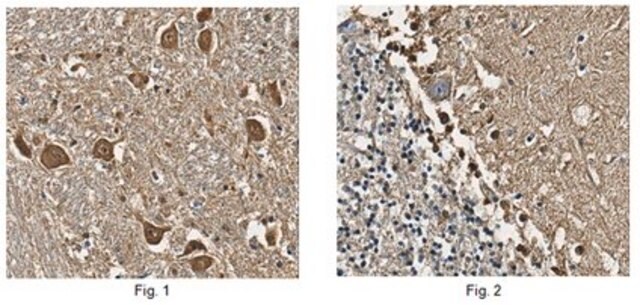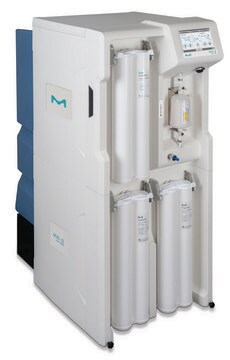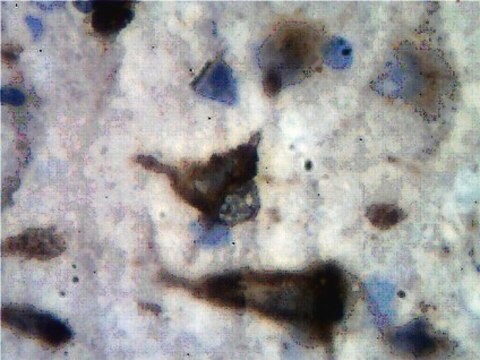MABF3166
Anti-HCV E2 Antibody, clone AR2A
Sinónimos:
Genome polyprotein;Envelope glycoprotein E2
About This Item
Productos recomendados
origen biológico
human
Nivel de calidad
forma del anticuerpo
purified antibody
tipo de anticuerpo
primary antibodies
clon
AR2A, monoclonal
mol peso
calculated mol wt 327.15 kDa
purificado por
using protein G
reactividad de especies
virus
envase
antibody small pack of 100 μL
técnicas
ELISA: suitable
neutralization: suitable
isotipo
IgG1
secuencia del epítopo
N-terminal half
Nº de acceso Protein ID
Nº de acceso UniProt
temp. de almacenamiento
-10 to -25°C
modificación del objetivo postraduccional
unmodified
Información sobre el gen
vaccinia virus ... E2(684)
Descripción general
Especificidad
Inmunógeno
Aplicación
Evaluated by ELISA in lysate from HEK293T cells transfected with H77E1E2.
ELISA Analysis (ELISA): Envelope glycoprotein E2 was detected by ELISA in various dilutions of lysates from HEK293T cells transfected with H77E1E2, but not in lysate from untransfected cells.
Tested Applications
ELISA Analysis: A representative lot detected HCV E2 in ELISA applications (Law, M., et al. (2008). Nat Med. 14(1):25-27; Giang, E., et al. (2012). Proc Natl Acad Sci. USA. 109(16):6205-10).
Neutralizing: A representative lot of this antibody neutralized several HCV isolates (Giang, E., et al. (2012). Proc. Natl. Acad. Sci. USA. 109(16):6205-10).
Note: Actual optimal working dilutions must be determined by end user as specimens, and experimental conditions may vary with the end user.
Forma física
Reconstitución
Almacenamiento y estabilidad
Otras notas
Cláusula de descargo de responsabilidad
¿No encuentra el producto adecuado?
Pruebe nuestro Herramienta de selección de productos.
Código de clase de almacenamiento
12 - Non Combustible Liquids
Clase de riesgo para el agua (WGK)
WGK 2
Punto de inflamabilidad (°F)
Not applicable
Punto de inflamabilidad (°C)
Not applicable
Certificados de análisis (COA)
Busque Certificados de análisis (COA) introduciendo el número de lote del producto. Los números de lote se encuentran en la etiqueta del producto después de las palabras «Lot» o «Batch»
¿Ya tiene este producto?
Encuentre la documentación para los productos que ha comprado recientemente en la Biblioteca de documentos.
Nuestro equipo de científicos tiene experiencia en todas las áreas de investigación: Ciencias de la vida, Ciencia de los materiales, Síntesis química, Cromatografía, Analítica y muchas otras.
Póngase en contacto con el Servicio técnico